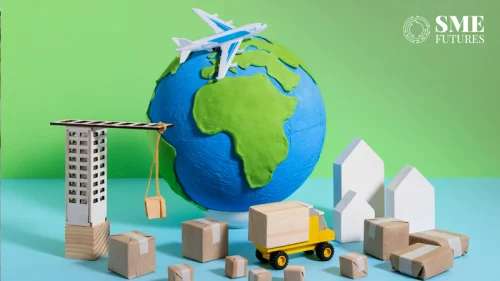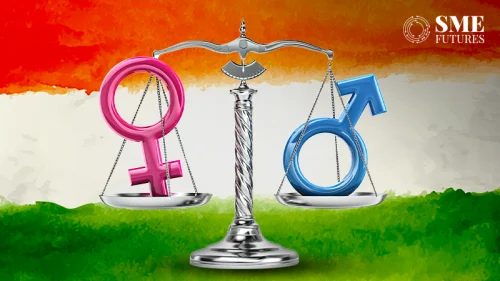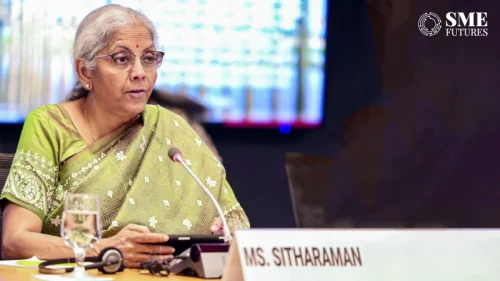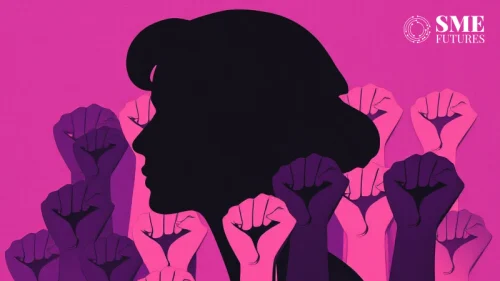It is uncontested truth that MSMEs are the backbone of the Indian economy, as they employ ~11 crore people, contribute ~1/3 of Gross Value-Added and ~50% of exports in the country.[1]
Above all, the MSMEs are the most significant source of competitive advantage for an economy as they have a leaner cost structure.
MSME customers expect them to adjust the scale of their operations in response to demand at short notice. As a result, they function as an economy’s shock-absorbers, bearing the risk arising from variability in the performance of their customers.
The last few years have not been particularly kind to the Indian MSMEs. Slowing growth, ineffective policy choices and Covid-19 have resulted in breaking the MSME backbone and thereby that of the Indian economy.
An India Ratings and Research Report [2] suggests that the MSMEs have been mishit by COVID-19 outbreak, which was preceded by three years of slowdown in economic growth. Specifically, the study highlights the following:
“Demonetisation in 2016 followed by the implementation of the Goods and Services Tax regime next year, financial sector stresses in the subsequent year, and the broad-based consumption slowdown in FY2019 have significantly impaired MSMEs’ businesses and balance-sheets alike. It is also reflected in the manner in which rating downgrades have continued to outpace rating upgrades for MSMEs over the last few years – a trend that invariably is expected to continue through the current year.”
A study[3] by the Reserve Bank of India concluded that the following:
“Credit growth in the MSME sector had started decelerating even before demonetisation, and declined further during the demonetisation phase. In contrast, GST implementation does not seem to have had any significant impact on credit.
In contrast, MSME exports were affected more adversely by issues relating to GST implementation than demonetisation due to delay in refund of upfront GST and input tax credit changing cash-driven working capital requirements.”
The question, therefore, is what an MSME business can do to cope up with the current economic uncertainty and build a business that sustains itself across cycles?
Building a sustainable growth business: Lessons from German Mittelstand Firms that are called “The Hidden Champions.”
The German mid-sized firms, or Mittelstand as they are known as are celebrated for their contribution to the German economy and the society. These firms are mostly family-owned, with their average margins being higher than large German firms and a majority of them are manufacturers. Prof Winfried Weber [4] mentions,
“The German Mittelstand is at the forefront of a modern management model that builds flatter, more-innovative, and more-networked enterprises.”
Prof Weber lists the following traits for these firms:
- They are focused on the “wishes of global customers”, which involves mutual technological leadership, which results in them having 5x more patents than the larger firms. Work towards creating long-term value rather than short-term profits.
- Build long-term relationships with their employees by investing in their welfare and capabilities resulting in their employee turnover being less than 2%.
- Set ambitious goals and work towards building a collaborative spirit.
- They draw strength from their traditions – providing entrepreneurial space, the equity built over generations, etc.
It is not that these firms are living in the past; they have also been changing with times. For example, The Economist[5] reports,
“Sennheiser, which makes headphones and microphones, recently passed to a new generation of Sennheisers, Andreas and Daniel, who stress the importance of “being global in everything we do”. They want to learn from “innovative customers” around the world: the Japanese are particularly demanding when it comes to sound, and Americans when it comes to fashion.”
Specialisation has allowed these firms to become global players in their field, and the country was able to weather the economic slowdown caused by the global financial crisis.
And now, these firms are getting back to work in the COVID impacted world. They are acting counter-cycle – investing and growing when others are trying to shrink their business.[6]
In short, we can say that it is enhanced customer engagement, ability to collaborate and innovate, and strong employee relationships that have helped the German family firms build a sustainable growth business.
Pricing for value to build capital for growth and managing risk
One of the biggest challenges that MSMEs face is the availability of required risk (equity or long-term debt) capital for growth. During the last few years, the credit available through the banking system has not grown, as the banks are themselves struggling to survive and thrive. At the same time, the capital markets have always favoured the large firm for raising equity or debt. It is, therefore, important for MSME owners that they build their risk capital (equity) and raise long-term debt to ensure that they can sustain an economic downturn for at least a couple of years. The only way to build equity is by ensuring that we don’t compromise profitability for growth. It is essential to price for value and earn a fair margin rather than grow by discounting prices.
The chart below shows that price is the most critical driver of profits of a business. One per cent increase (reduction) in price will result in the profit being increased (decreased) by 10%. At the same time, one per cent increase (decrease) in volume increases (decreases) profits by just 4%. In short, a customer asking for a 1% reduction in price should be willing to offer a 2.5% additional volume for the business to make the same amount of profit.

Pricing for value does not mean the volumes are sacrificed. A business can compete for volume by managing cost. In this area, MSMEs have a natural advantage as we all know that lean manufacturing (or operations or construction) practices combined with automation can create a globally competitive cost structure over time. Toyota and its many suppliers have proved that for decades.
Managing inventory and fighting against supply chain bullying to reduce the finance requirement
Inventory is a buffer needed for managing variability in demand or dealing with uncertainty in demand. In many situations, we end up being risk-averse and carry much more extensive inventory than required, which not only blocks precious capital but also results in the production and sales team becoming complacent. A buffer adds to cost, and the cost of carrying can vary between 15% to 20% of inventory value, depending on the cost of finance, rate of obsolescence, cost of space, material handling and insurance.
Similarly, the MSMEs are often bullied by their large customers who seek credit terms of 90 or 120 days without giving a chance to negotiate. It is a surprising behaviour on the part of larger firms. Given that their cost of finance is lower than their MSME suppliers, there is a business case for them to give advance and seek lower prices to the extent that the concerned MSME is saving on financing cost. The only reason why one does see such a rational choice coming from large firms is the belief that an MSME will never be able to pass on their higher cost of finance to them. Supply chain bullying has been observed to be a global phenomenon. [7]
In summary, it may be mentioned that an MSME can have an EASY LIFE across business cycles if it can
- Leverage technology, relationships and capital,
- Invests in product, process and technology innovation,
- Can build a modular product and plant designs, which enhance flexibility,
- Focuses on investing and spending for creating and delivering value for customers,
- Eliminates non-value-adding work, simplifies and automates the rest and minimises waste.
The chart below summarises the lessons from successful MSMEs globally and academic research.
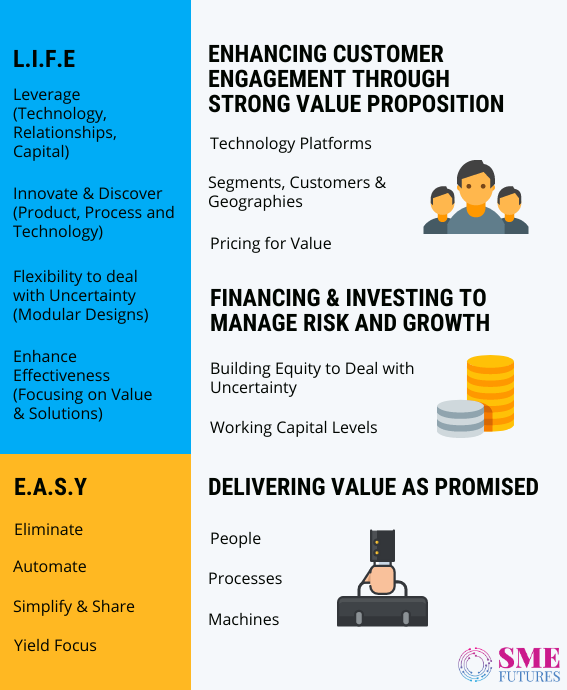
Reference Links
[1] MSME Sector Contributes Significantly to Indian Economy, A PIB Press Release of July 22, 2019 https://pib.gov.in/Pressreleaseshare.aspx?PRID=1579757
[2] Deeper Troughs, Long Road to Recovery to Keep MSME Sector Under Stress Till FY22 by Arindam Som and Abhash Sharma https://bfsi.economictimes.indiatimes.com/blog/deeper-troughs-long-road-to-recovery-to-keep-msme-sector-under-stress-till-fy22/4298
[3] How have MSME Sector Credit and Exports faired by Harendra Behera and Garima Wahi https://www.rbi.org.in/Scripts/MSM_Mintstreetmemos13.aspx
[4] Germany’s Midsize Manufacturers Outperform Its Industrial Giants by Winfried W Weber https://hbr.org/2016/08/germanys-midsize-manufacturers-outperform-its-industrial-giants
[5] German Lessons https://www.economist.com/business/2014/07/12/german-lessons
[6] How the German Mittelstand is mastering the COVID-19 crisis by Jürgen Meffert, Niko Mohr, and Gérard Richter https://www.mckinsey.com/business-functions/mckinsey-digital/our-insights/how-the-german-mittelstand-is-mastering-the-covid-19-crisis
[7] FTSE 100 bosses asked to tackle ‘supply chain bullying’ by Francis Churchill https://www.cips.org/supply-management/news/2018/may/ftse-100-asked-to-tackle-supply-chain-bullying/


